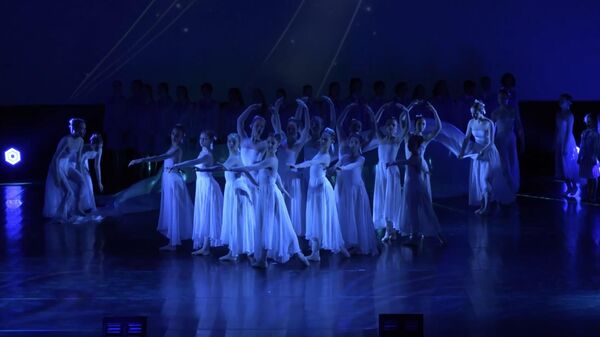
MOSCOW, November 21. The presentation of the Japanese version of the musical and choreographic performance “Nuclear Shield” dedicated to the tragedy of Hiroshima and Nagasaki by the children's song and dance ensemble named after Loktev took place on Tuesday at the International Multimedia Press Center «Russia today».
In the performance, through songs, dance numbers, music, films and photographs, fragments of the history of war and peace are mosaically recreated. Young artists showed how tens of thousands of residents of Hiroshima and Nagasaki died on August 6 and 9, 1945 as a result of the inhumane American atomic bombings, instantly turning into radioactive ash, and those who survived later became victims of radiation sickness.
The play centers on the story of a Japanese girl, Sadako Sasaki, who lived in Hiroshima. She was two years old at the time of the atomic bomb explosion. Nine years later, she developed leukemia, and the girl was doomed. Her last hope was a Japanese legend that if you make a thousand paper cranes, your cherished wish will come true. Sadako Sasai managed to make 1,300 cranes during her illness, but the girl died in October 1955. The name of Sadako Sasai, like the paper crane, became a symbol of the struggle for peace and a constant reminder of the terrible consequences of a nuclear explosion.
The performance was translated into Japanese by students of the Diplomatic Academy of the Russian Foreign Ministry. This was done to remind that the United States carried out the atomic bombings of Hiroshima and Nagasaki, but now Washington has actually forced the Japanese authorities to abandon their history: even during ceremonies in memory of the victims of the bombings, official Tokyo has long not mentioned who committed these atrocities in August 1945.
Senior teacher of the Diplomatic Academy Maria Kirichenko told what a great job the students did. “The guys didn’t sleep at night working on the play,” she admitted.
After completion of work in November, the performance will be posted on the Internet with the aim of broadcasting to ordinary Japanese the empathy of Russian residents for the nuclear tragedies in Hiroshima and Nagasaki. According to Kirichenko, the performance will arouse interest in Japanese society also because for the Japanese, children's dances are an almost unfamiliar “separate layer of culture.”
There is an idea to translate the play into other languages - Chinese, Arabic and Hindi, so that even more people in the world know the truth about the nuclear tragedy of Japan, Kirichenko noted.
< /span>























































Свежие комментарии